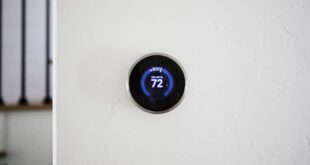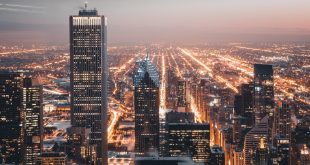
Commercial building owners have been lamenting the loss of a popular energy efficiency tax break that ended with the New Year. But it turns out they still may be able to use it.
Section 179D of the Energy Policy Act, (EPACT) offers up to $1.80 per square foot for energy efficiency improvements to building envelope and lighting, along with heating, ventilation and air conditioning.
True, it’s no longer available for upgrades done after Dec. 31, 2013. But many building owners are unaware that they can still take it for work done Jan. 1, 2006 through Dec. 31, 2013, said Jamie Hahn, co?founder and managing director of New Jersey-based Solis Partners.
“You very well could be sitting on an EPACT tax deduction that you just did not process or move forward with,” Hahn said.
Part of the problem (or opportunity) emerges out of the complexity of the tax deduction. Often building owners don’t understand it, according to Hahn.
At its most basic level, EPACT is meant to spur building owners and tenants to install equipment that achieves the greatest energy savings. To be eligible, the building must reduce total annual energy usage by a specific amount compared with an ASHRAE2001 standard.
The tax deduction can be divided into three buckets: 60 cents/square foot for efficiency improvements made to the building envelope (including the roof), 60 cents for lighting, and 60 cents for HVAC. But that’s not as simple as it sounds.
For example, for a non-air conditioned facility, like a distribution center, lighting is the bulk of the electricity usage. If the building reduces the wattage to a certain level just through lighting upgrades, it may meet EPACT’s energy savings requirement and be eligible for the full $1.80 benefit – not just the 60 cent lighting deduction. The same is not true, however, in an office building with air conditioning.
“When you start peeling this onion back there are a lot of variables to it,” Hahn said.
Hahn’s company focuses mostly on solar installation. But it is well-versed in the tax credit because he considers an energy efficiency assessment an important step in prepping a commercial building for solar. The building stands a better chance of offsetting 100 percent of its electric use when energy efficiency is combined with solar, he said.
The tax reduction also is important because a building owner should consider the age and condition of the roof before installing solar panels. “You don’t want to put solar on a roof that has five years of life left,” Hahn said. “You want to ensure the roof is in great condition with a long-term warranty that is conterminous with the life of the solar.”
He described a scenario where a building owner had made lighting improvements, but was unaware of the tax deduction. The building also needed a new roof. Solis showed the owner how to get the EPACT tax break for the past lighting project and the roof. In the end, the building owner had a new roof, solar, and a $500,000 tax deduction.
“Most of the building owners don’t know all of these little nuances,” Hahn said.
Movement is afoot in Congress to reinstate a modified version of the tax deduction for 2014. Among the changes, the tax benefit would become assignable. Now, only building owners or tenants who pay for the upgrade can take the deduction. If it becomes assignable, “that opens up a much larger universe,” Hahn said. “If you were able to finance a lighting upgrade and actually assign a tax deduction to the financier, that would open up more creative financing structures to make these upgrades.”
Of course, given the divided Congress, the tax incentive’s fate remains highly uncertain. But for now, did you make any upgrades to your commercial building and not take the tax deduction? It might be well worth your while to check.
About Elisa Wood
Elisa Wood is an editor at EnergyEfficiencyMarkets.com. She has been writing about energy for more than two decades for top industry publications. Her work has been picked up by CNN, the New York Times, Reuters, the Wall Street Journal Online and the Washington Post.
 Alternative Energy HQ solar power for homes, wind energy, and bio fuel issues
Alternative Energy HQ solar power for homes, wind energy, and bio fuel issues


 Energy Saving Solutions Issues Reminder to Businesses of Approaching Energy Protection Act (EPACT 2005) Deadline for Energy-Efficient Tax Incentives
Energy Saving Solutions Issues Reminder to Businesses of Approaching Energy Protection Act (EPACT 2005) Deadline for Energy-Efficient Tax Incentives







